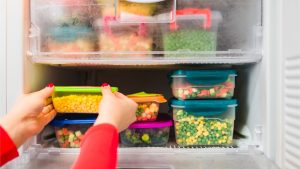Cold Storage Myths: What You Should Never Freeze
Cold storage is a vital component of food preservation, extending the shelf life of perishable items and preventing spoilage. However, not all foods and items fare well in the freezer. Freezing certain products can lead to undesirable changes in texture, taste, and overall quality. In this article, we’ll debunk common cold storage myths and identify what you should never freeze to maintain the best quality of your items.
Understanding Freezing and Its Effects
Freezing slows down the growth of bacteria and helps preserve food by lowering its temperature. While it’s an effective method for extending the life of many items, freezing is not suitable for everything. Understanding how freezing affects different foods is essential for maintaining their quality and avoiding potential problems.
Common Myths About Freezing
1. All Foods Freeze Well
One common myth is that all foods can be successfully frozen without any issues. While freezing is effective for many items, it doesn’t work well for everything. Certain foods lose their texture, flavor, or nutritional value when frozen.
Foods That Don’t Freeze Well
Fresh Herbs: Freezing fresh herbs like basil and cilantro can cause them to become mushy and lose their flavor. Instead, consider drying or using them fresh.
Cream-Based Sauces: Sauces made with cream or milk can separate and curdle when frozen, affecting their consistency and taste.
Cooked Pasta: Freezing cooked pasta can lead to a mushy texture upon reheating. If you must freeze pasta dishes, undercook the pasta slightly to help maintain texture.
2. Freezing Improves Food Quality
Another myth is that freezing can enhance the quality of food. While freezing helps preserve food, it doesn’t improve its quality. In some cases, it can even degrade the texture and flavor.
Examples of Quality Degradation
Bread and Baked Goods: Freezing bread and baked goods can result in changes in texture, making them dry or crumbly when thawed. Use airtight packaging to minimize these effects.
Fried Foods: Foods that are fried, such as French fries and chicken wings, can become soggy or lose their crispiness after freezing and reheating.
Fruits with High Water Content: Fruits like watermelon and oranges can become mushy and lose their original texture and flavor after freezing.

3. Freezing Makes Food Safe Indefinitely
A common misconception is that freezing makes food safe indefinitely. While freezing slows down bacterial growth, it doesn’t eliminate it. Over time, frozen food can still degrade in quality and potentially become unsafe.
Best Practices for Freezing
Adhere to Storage Times: Follow recommended storage times for different foods to ensure quality and safety. For example, most frozen meats should be used within 6-12 months.
Proper Packaging: Use airtight packaging to prevent freezer burn and protect food from moisture and air exposure.
Regularly Check Frozen Foods: Monitor the condition of frozen items and discard any that show signs of freezer burn or deterioration.
What You Should Never Freeze
1. High-Water Content Vegetables
Vegetables with high water content, such as lettuce and cucumbers, do not freeze well. The ice crystals that form during freezing can damage the cell structure, leading to a limp and unappetizing texture when thawed.
Alternatives for High-Water Content Vegetables
Fresh Storage: Store these vegetables in a cool, dry place for optimal freshness.
Cooking: Consider cooking or pickling high-water content vegetables instead of freezing them.
2. Soft Cheeses
Soft cheeses like brie and camembert can become crumbly and lose their creamy texture when frozen. Freezing can also affect their flavor and make them less enjoyable to eat.
Storing Soft Cheeses
Refrigeration: Store soft cheeses in the refrigerator and use within their recommended timeframe.
Preservation Methods: For longer-term storage, consider other preservation methods like waxing or using specialty cheese preservation techniques.
3. Carbonated Beverages
Freezing carbonated beverages, such as soda and sparkling water, is not advisable. The expansion of liquid when frozen can cause the container to burst, leading to a mess and potential loss of the product.
Alternative Storage for Beverages
Refrigeration: Store carbonated beverages in the refrigerator to keep them chilled without the risk of freezing-related issues.
Cooler Storage: For events or outdoor activities, use coolers with ice packs to keep beverages cold.
4. Eggs in Their Shells
Freezing eggs in their shells is not recommended because the liquid expands as it freezes, which can cause the shells to crack and potentially lead to contamination.
Proper Egg Freezing Techniques
Cracked and Mixed: To freeze eggs, crack them into a container, beat lightly, and then freeze in an airtight container or ice cube tray.
Use Within 12 Months: Frozen eggs should be used within 12 months for best quality and safety.
5. Foods with High Fat Content
Foods with high fat content, such as fatty meats and creamy dishes, can develop rancidity and off-flavors when frozen for extended periods. The fat can also become greasy and affect the overall taste and texture.
Best Practices for High-Fat Foods
Short-Term Freezing: If freezing high-fat foods, do so for a short period and use proper packaging to minimize exposure to air and moisture.
Alternative Storage: Consider using refrigeration or other preservation methods for high-fat foods that will be consumed within a shorter timeframe.
Conclusion
While cold storage is a valuable tool for preserving food, it’s important to recognize that not all items benefit from freezing. Understanding the myths and realities of freezing can help you make informed decisions about what to store and how to maintain the quality of your food. By avoiding freezing for certain items and following bes

Recent Comments